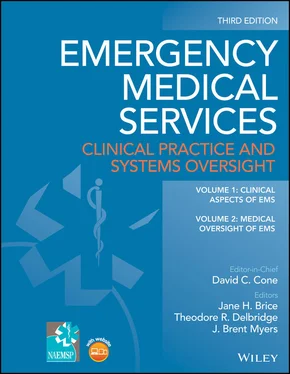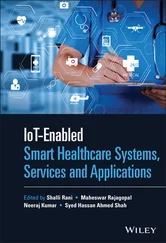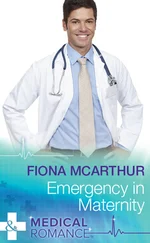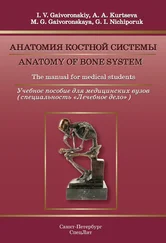not do Resources for the responder Training How to protect yourself Dirty bombs, exposure burns, and ingestion injury Nuclear weapons Effect on medical care Summary References Additional resources CHAPTER 106: Weapons of mass destruction Introduction Unique aspects of WMD Special requirements for WMD response Conclusion References SECTION VIII: Special Environments CHAPTER 107: Tactical emergency medical support Introduction History of tactical teams and TEMS The TEMS environment and limitations of traditional EMS response Operational considerations for clinician and casualty Tactical medical clinicians Controversies in TEMS Summary Acknowledgment References CHAPTER 108: Technical rescue, confined space, and limited access situations Technical rescue Urban search and rescue Confined space medicine Rescuer safety Specific clinical problems Summary References CHAPTER 109: Wilderness EMS Introduction Current Operations and Epidemiology Standardization Scopes of Practice Medical Oversight Operations Communications Protocols WEMS‐Specific Extrication, Treatment, Transport Equipment Survival Skills and Capability for Autonomous Operation Challenges to WEMS Systems Summary Author Disclosures References CHAPTER 110: Mobile integrated health and community paramedicine Introduction Brief history to present day Personnel education Medical oversight Integration with health care systems Conclusion Acknowledgment References SECTION IX: Safety and Quality CHAPTER 111: Patient safety culture Introduction to patient safety How accidents happen Doing things right Patient safety in EMS Just culture and adverse event reporting Evaluating organizational safety culture Changing organizational culture Safety management systems in EMS Methods to improve patient safety in EMS The future of patient safety in EMS Conclusion References CHAPTER 112: The evolution of quality concepts and methods Introduction Origins of improvement science History of quality improvement in health care Frameworks for quality improvement History of quality improvement in EMS Conclusions References CHAPTER 113: Defining, measuring, and improving quality Introduction Vision: Defining Quality Strategy: Using the Science of Quality and Performance to Create Improvement Tactics: Reimagining the EMS Quality Improvement Program Summary References CHAPTER 114: Information systems Introduction Existing registries and health care databases EMS information system design EMS system types EMS operations from a data perspective Public safety answering point EMS systems for 2030: a look at the future EMS information system components Elements of successful information systems References SECTION X: Advancing Knowledge CHAPTER 115: EMS research basics Why prehospital research? Getting started Analytical designs Conclusion References CHAPTER 116: Informed consent in EMS research The development of uniform requirements for the protection of human subjects The role of the IRB Public perception of prehospital care Informed consent History of the EFIC for emergency research Exception from informed consent and WIC regulations Conclusion References Additional resource CHAPTER 117: Out‐of‐hospital cardiac arrest research Introduction Clinical research designs Consistent definitions and the denominator Population description Data collection and reporting Outcome Assessment Outcome sources Statistical analyses Ethics and consent Quality control and monitoring in clinical trials Conclusions Acknowledgment References CHAPTER 118: Trauma research methodology Prehospital trauma study types Design Issues in Prehospital Trauma Studies Other considerations for prehospital trauma research Data analysis and trauma severity scoring Military prehospital trauma research Acknowledgment References CHAPTER 119: Pediatric research methodology Introduction The Need for Pediatric Prehospital Care Research Status of Pediatric Prehospital Research Challenges Unique for Pediatric Prehospital Researchers Pediatric Prehospital Research Priorities Moving Forward: Challenges and Opportunities References CHAPTER 120: Cost analysis research Introduction State of cost analysis research in EMS Types of cost analyses Conducting a full economic evaluation Charges versus costs Perspective Framework for EMS costs Joint production Conclusion References CHAPTER 121: Statistical concepts for research in emergency medical services Introduction Classical hypothesis testing Type I error Type II error and power Power analysis and sample size determination Statistical tests Parametric tests Nonparametric tests Confidence intervals Multiple comparisons Interim data analyses Subgroup analysis Intention‐to‐treat analysis Multivariable analyses Clustering Missing data Using statistical consultants References Appendix: Chapter Mapping to the 2019 Core Content of EMS Medicine Glossary Index End User License Agreement
1 Chapter 5 Table 5.1 Asthma severity guide
2 Chapter 6 Table 6.1 Conditions that impair oxygen transfer in the lungs Table 6.2 Devices for delivery of supplemental oxygen
3 Chapter 7 Table 7.1 Categories of shock
4 Chapter 12 Table 12.1 CARES Public Reporting of State Aggregate Metrics, 2019.
5 Chapter 13 Table 13.1 The potentially treatable Hs and Ts of cardiac arrest
6 Chapter 16 Table 16.1 Classification of syncope
7 Chapter 18 Table 18.1 The Cincinnati Prehospital Stroke Scale Table 18.2 Los Angeles Prehospital Stroke Scale Table 18.3 Rapid Arterial Occlusion Evaluation (RACE) Scale Table 18.4 Joint Commission stroke center comparison
8 Chapter 19 Table 19.1 Common sites of referred abdominal pain
9 Chapter 20 Table 20.1 Key elements in the prehospital assessment of diabetic emergencies Table 20.2 Pediatric dextrose administration Table 20.3 Key elements for safe discharge after treatment for hypoglycemia
10 Chapter 21 Table 21.1 Pediatric anaphylaxis medication doses
11 Chapter 22 Table 22.1 ECG changes in hyperkalemia
12 Chapter 23 Table 23.1 Suggested Personal Protective Equipment Based on Procedure or Inte... Table 23.2 Suggested Precautions Based on Suspected Infection Table 23.3 Comparison of coronavirus infections, seasonal influenza, and 1918...
13 Chapter 24 Table 24.1 Ten leading causes of nonfatal injury emergency department visits ...
14 Chapter 27Table 27.1 Revised Trauma Score
15 Chapter 28Table 28.1 Morbidity and mortality for vulnerable road users
16 Chapter 30Table 30.1 Glasgow Coma ScaleTable 30.2 Severity of head injury based on GCSTable 30.3 Pediatric Glasgow Coma Scale (for nonverbal children)
17 Chapter 31Table 31.1 Comparison between lightning, high‐voltage, and low‐voltage electr...
18 Chapter 32Table 32.1 Categories of explosive injuriesTable 32.2 Recommended postexposure management by risk category and specific ...Table 32.3 Overview of explosive‐related injuries
19 Chapter 33Table 33.1 Classification of burns based on depthTable 33.2 Classification of burns by the American Burn Association by total ...
20 Chapter 36Table 36.1 Upper extremity neurologic examinationTable 36.2 Lower extremity neurologic examinationTable 36.3 Upper extremity immobilization approachTable 36.4 Lower extremity immobilization approach
21 Chapter 43Table 43.1 Stages of active laborTable 43.2 APGAR scoring system
22 Chapter 45Table 45.1 Recommended equipment for an out‐of‐hospital perimortem C‐section
23 Chapter 46Table 46.1 Odors that suggest a toxicologic exposureTable 46.2 Examples of diverse classes of agents that can potentially cause s...Table 46.3 Examples of potential toxins associated with miosis or mydriasisTable 46.4 ToxidromesTable 46.5 Antidotes
24 Chapter 48Table 48.1 Stages of hypothermia can be defined based on the clinical present...
25 Chapter 49Table 49.1 2018 Heat‐related illness emergency department visit by stateTable 49.2 2018 heat‐related illness mortality by state
Читать дальше












